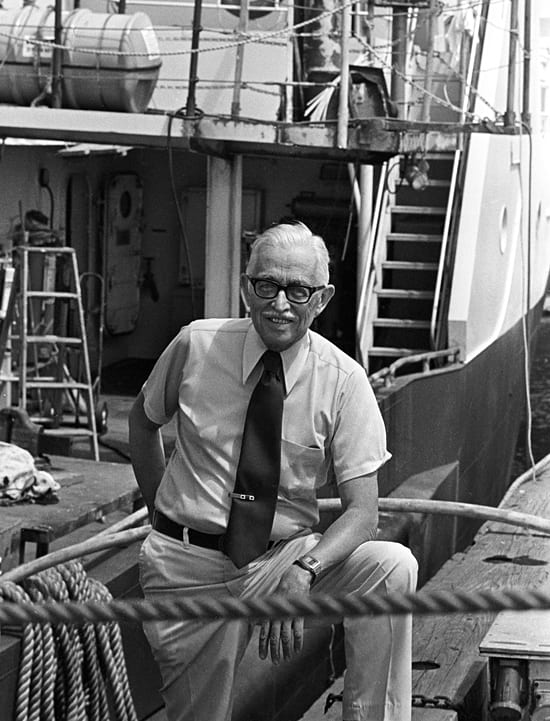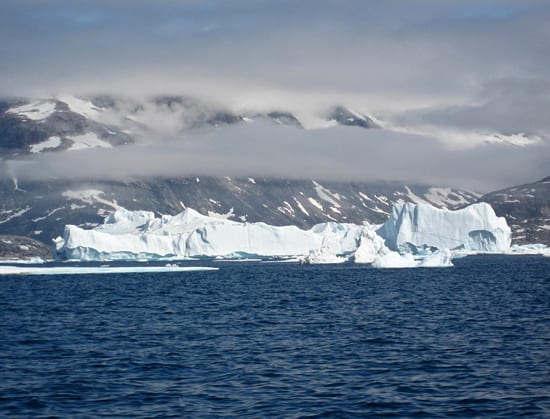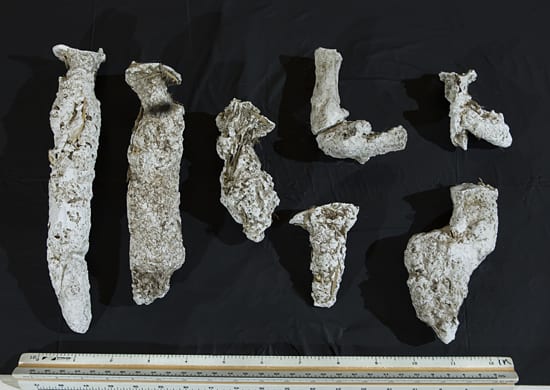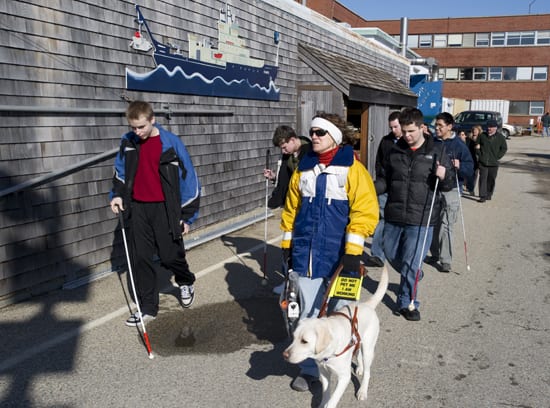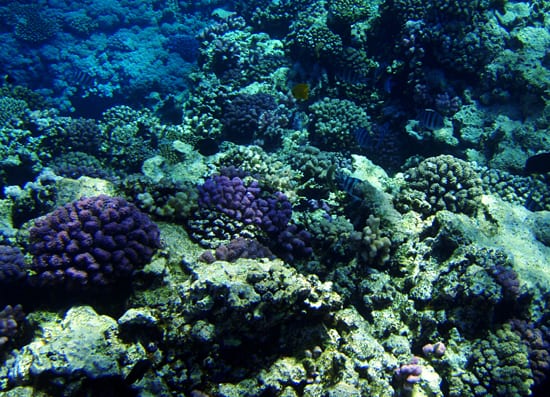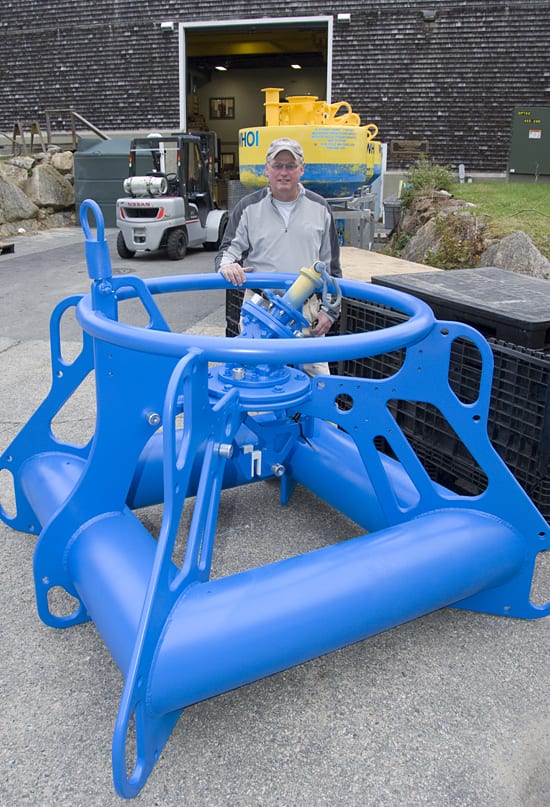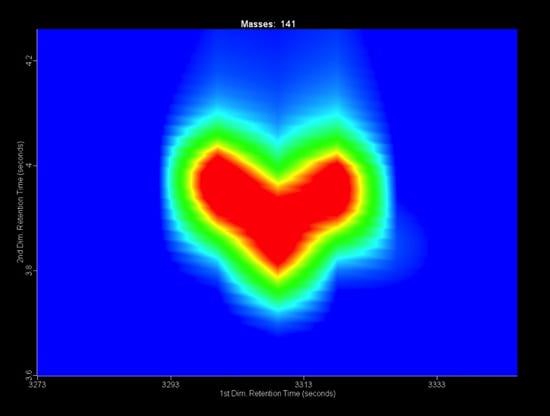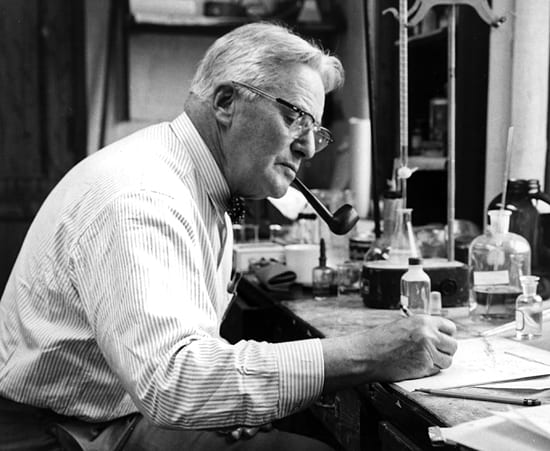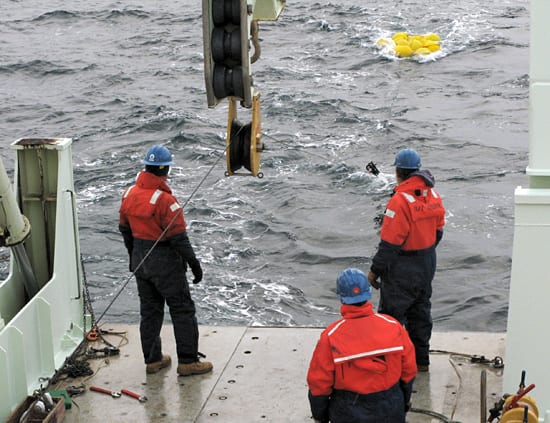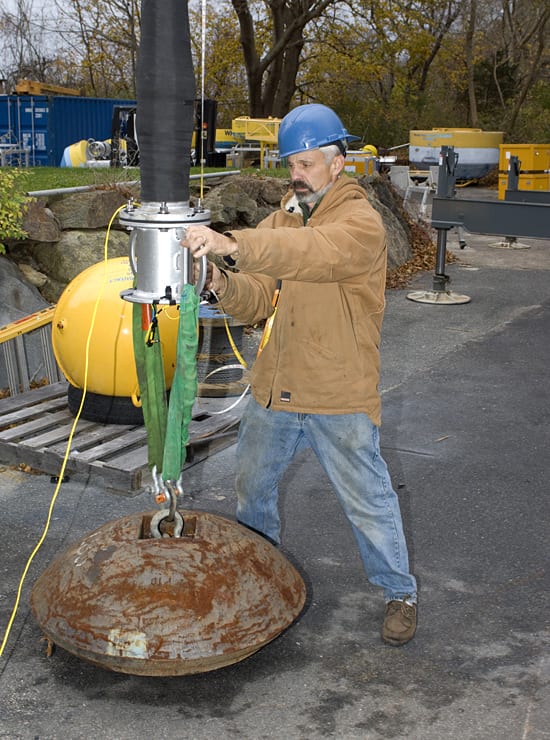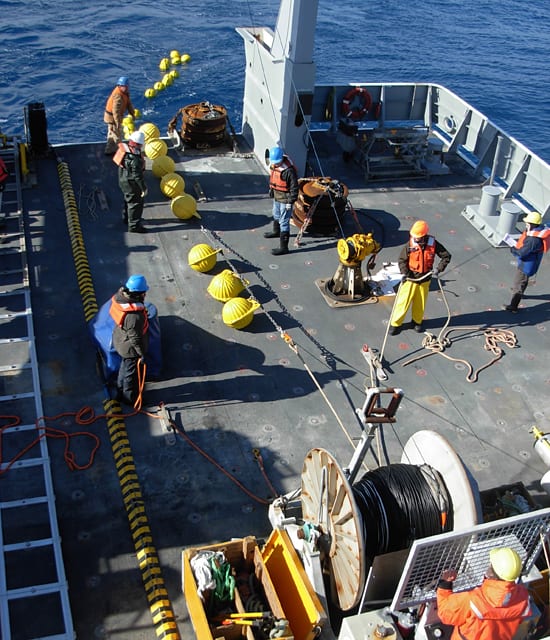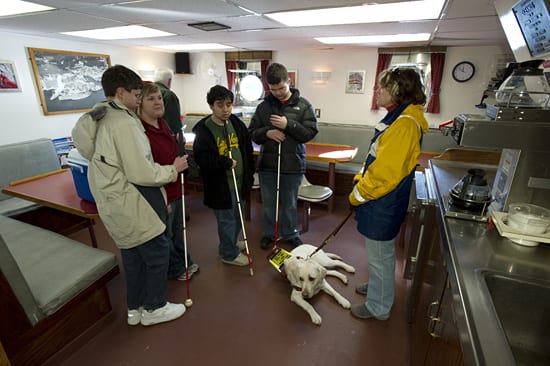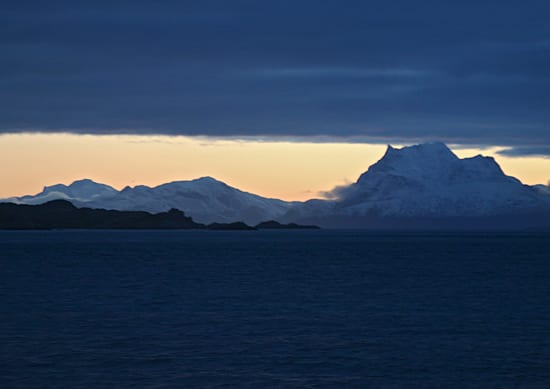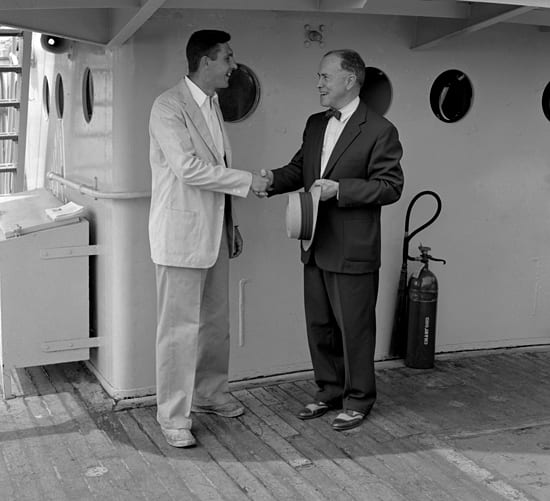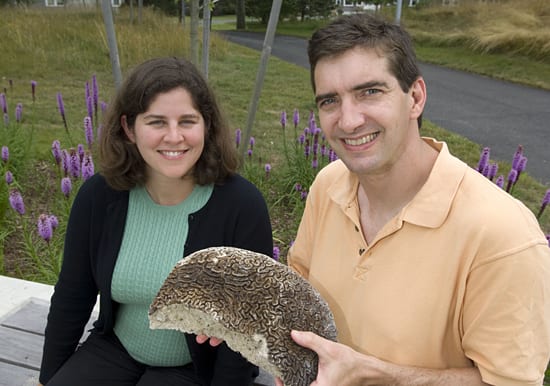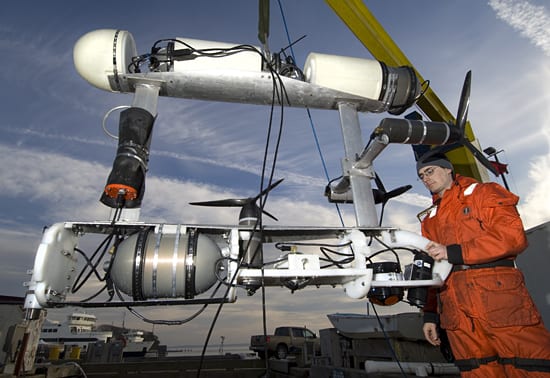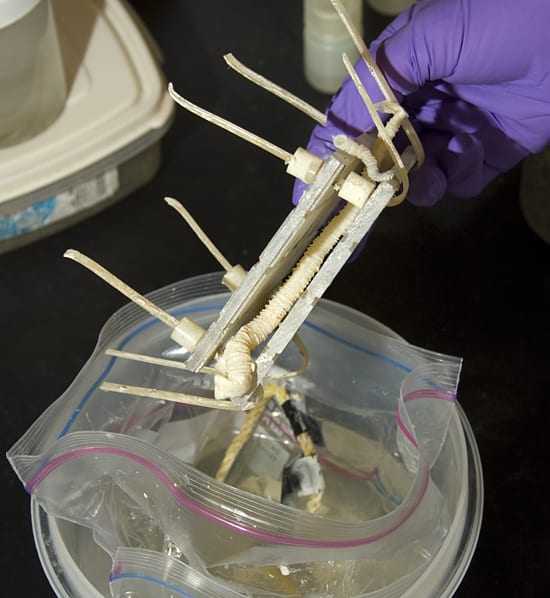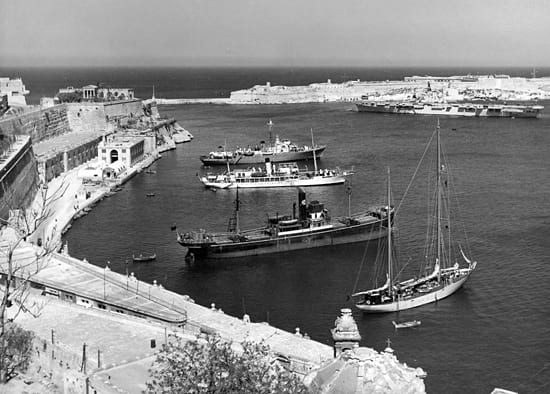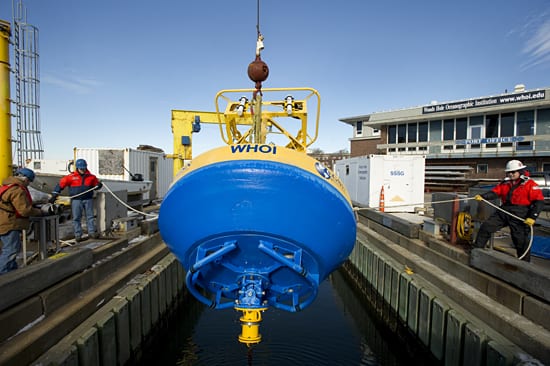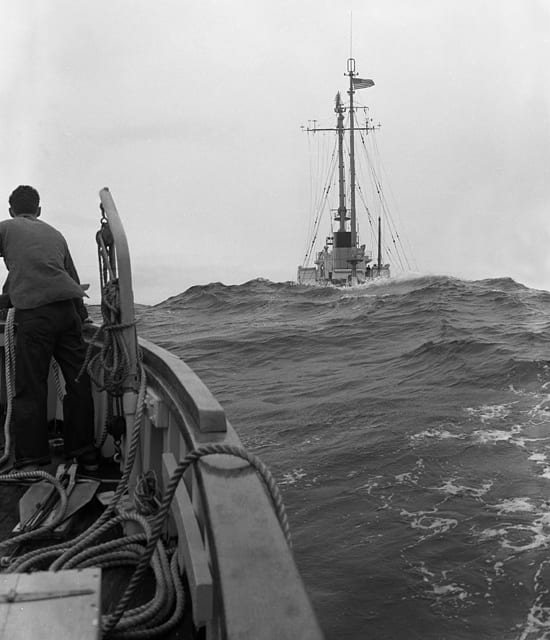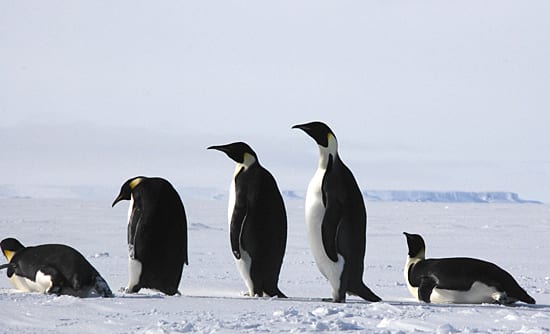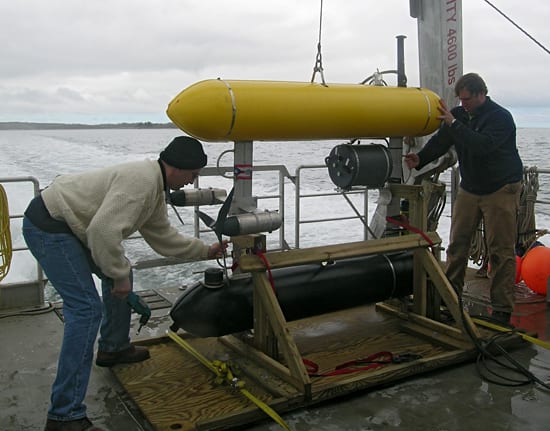Multimedia Items
A national leader in ocean sciences
As the Institution’s fourth director, from 1958 to 1977, Paul Fye presided over a period of major change. It was a time of great national interest in basic science, including…
Read MoreRed beret
During the search for a U.S. hydrogen bomb lost in the Mediterranean off Spain in 1966, the Human Occupied Vehicle Alvin operated from a Navy dock landing ship. The red…
Read MoreTracking Greenland’s glacial retreat
Recent changes in ocean circulation in the North Atlantic are delivering larger amounts of subtropical waters to the high latitudes. A research team led by Fiamma Straneo, a physical oceanographer…
Read MoreStill toxic after all these years
In 1969, the barge Florida ran aground off Cape Cod, spilling 189,000 gallons of fuel. Prevailing winds blew oil from the barge into Wild Harbor in Falmouth, Mass., where decades…
Read MoreLeading the way
Physical oceanographer Amy Bower leads a group of students from the Perkins School for the Blind to the WHOI dock for an onboard tour of the R/V Oceanus. Students from…
Read MoreIndicators of ocean health
Tropical coral reefs make up a small part of Earth’s ocean but are among the most diverse, productive ecosystems in the world. The fisheries and tourism that reefs support make…
Read MoreDesigned for shallow water
Engineering assistant John Kemp stands behind the Multi-Function-Node (MFN) designed for the Ocean Observatory Initiative for use in shallow water applications. Generally moorings have numerous sub-surface components, such as sub-surface…
Read MoreWill you be my Naphthalene?
This image of a single molecule of crude oil from the Gulf of Mexico appears to have an intrinsic sense of romance on Valentine’s Day. WHOI scientists Bob Nelson and…
Read MoreLife in the sea
Biologist Alfred Redfield in his lab, circa 1955. Redfield joined the WHOI staff as senior biologist in 1931 and was Associate Director from 1942 to 1956. His broad marine research…
Read MoreFlow of the Hudson Strait
Aboard the R/V Knorr in the Hudson Strait, engineer John Kemp (left), Knorr Bosun Pete Liarikos (right), and Dara Tebo of the Physical Oceanography department, work to recover a mooring.…
Read MoreStretch it
Senior engineering assistant William Ostrom tests a stretch hose that will be utilized on moorings and buoys for the Ocean Observatory Initiative (OOI). The specially designed cable, which stretches like…
Read MoreHands across the water
The crew aboard the R/V Atlantis extended a helping hand to a fishing vessel in distress off the coast of Peru on Jan. 20, 2010. The vessel, the Peruvian long…
Read MoreSound sources
WHOI senior engineering assistant Brian Guest (top of photo) leads a team to deploy the first of two sound source moorings in the Southeast Pacific as part of a Diapycnal…
Read MoreOceanInsight
Amy Bower, of the WHOI Physical Oceanography department, gives a tour of the R/V Oceanus to a group of students from the Perkins School for the Blind. Bower, who is…
Read MoreTracking warm eddies in a cold sea
Water in the ocean is always on the move, with big currents flowing like rivers in different directions and at different layers in the sea. These ocean currents help carry…
Read MoreA new addition
Edward H. Smith (right) WHOI director from 1950 to 1956, greets Crawford master David Casiles upon the ship’s arrival in Woods Hole in 1956. Smith spent 40 years in the…
Read MoreCoral climate clues
Former MIT/WHOI Joint Program student Nathalie Goodkin and Scott Doney of the Marine Chemistry and Geochemistry department pose with a piece of Bermuda brain coral. Corals accrete seasonal and annual…
Read MoreFlying high
WHOI/MIT Joint Program student Chris Murphy tests a newly-built SeaBED autonomous underwater vehicle (AUV) at the WHOI dock in 2009. The AUV, shown here without its outer “skin,” was developed in…
Read MorePacific plates
Stacked plastic plates, called “sandwiches” (left), used as artificial substrates for larvae of vent animals. As part of the research project LADDER (Larval Dispersal on the Deep East Pacific Rise),…
Read MoreCharting the Aegean
Valletta, Malta, was among the ports Atlantis (right) visited during “the Med cruise,” a six-month, 1948 cruise to the Mediterranean Sea. The cruise was funded by the Hydrographic Office and…
Read MoreIt’s a buoy for OOI
The first buoy designed for the Ocean Observatory Initiative (OOI) undergoes testing at the dock. Holding the lines to steady the suspended buoy are senior engineer Tim Scholz, left, and…
Read MoreFree-living barnacle?
The USCG Campbell towing Balanus Circa 1948. Balanus was part of the WHOI fleet from 1946 to 1950. It was a rather uncomfortable craft that biologist Gordon Riley said was…
Read MoreSingle file line
For all its ice, cold, and six months of darkness, the oceans around Antarctica are teeming with life. Penguins, whales, and seals inhabit the area where sea ice meets open…
Read MorePiecing together the past
Deep-sea archaeologist Brendan Foley and Matt Grund, of the Applied Ocean Physics & Engineering department, ready a SeaBED Autonomous Underwater Vehicle (AUV) for testing off the R/V Tioga in 2005.…
Read More
